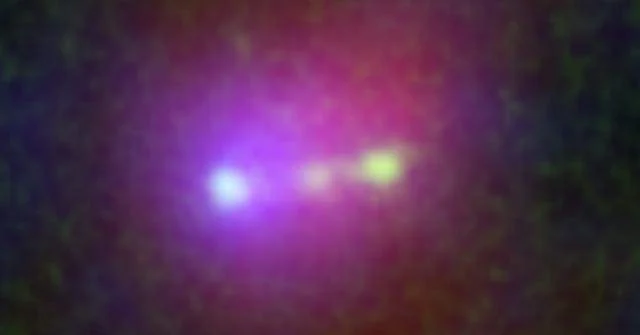Astronomers using the combined power of the Atacama Large Millimeter/submillimeter Array (ALMA) telescope in Chile and NASA’s Hubble and Spitzer space telescopes have discovered a far-flung trio of primitive galaxies nestled inside an enormous blob of primordial gas nearly 13 billion light-years from Earth. It’s possible the trio will eventually merge into a single galaxy similar to our own Milky Way.
“This exceedingly rare triple system, seen when the universe was only 800 million years old, provides important insights into the earliest stages of galaxy formation during a period known as ‘cosmic dawn,’ when the universe was first bathed in starlight,” said Richard Ellis of the California Institute of Technology, Pasadena, a member of the research team.

Researchers first detected this object, which appeared to be a giant bubble of hot, ionized gas, in 2009. Dubbed Himiko (after a legendary queen of ancient Japan), it is nearly 10 times larger than typical galaxies of that era and comparable in size to our own Milky Way. Subsequent infrared observations with NASA’s Spitzer Space Telescope provided more clues about the object’s mass, suggesting Himiko might represent a single galaxy, which would make it uncharacteristically massive for that period of the early universe.
“The new observations revealed that, rather than a single galaxy, Himiko harbors three distinct, bright sources, whose intense star formation is heating and ionizing this giant cloud of gas,” said Masami Ouchi, an associate professor at the University of Tokyo who led the international team of astronomers from Japan and the United States.
New data from ALMA, Hubble and Spitzer also led astronomers to speculate that Himiko could be made up almost entirely of primordial gas, a mixture of the light elements hydrogen and helium, which were created in the Big Bang event that gave birth to our universe. If correct, this would be a landmark discovery signaling the detection of a primordial galaxy seen during its formation.






